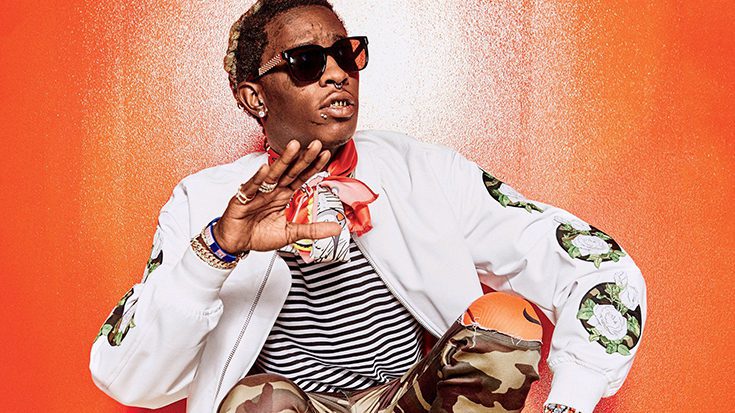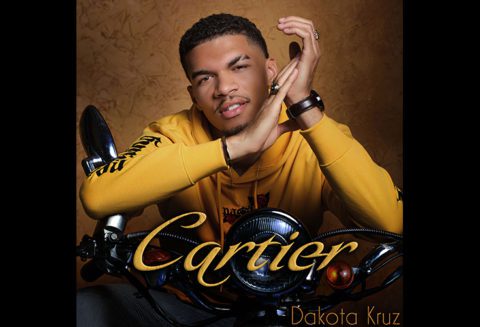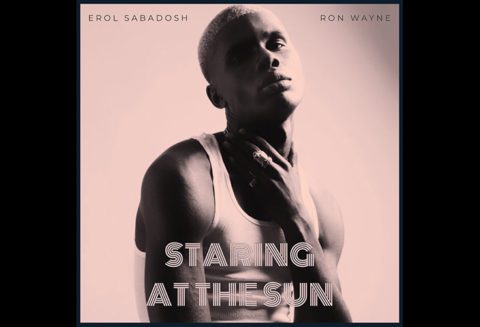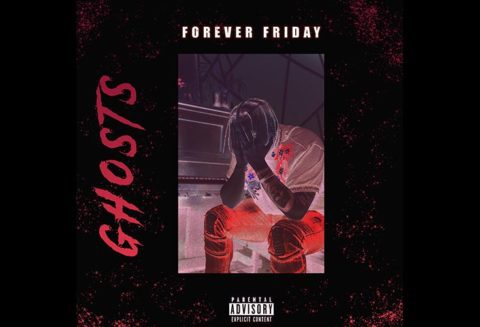
Curious about the intersection where hip-hop culture meets the notorious Bloods gang? In the dynamic world of hip-hop, the affiliation between rappers and street gangs, particularly the Bloods, has long been a subject of fascination and controversy. From their gritty lyrics to their bold fashion choices, these artists not only command attention with their musical prowess but also with their association to the notorious gang. In this blog post, we dive deep into the list of rappers who proudly proclaim their allegiance to the Bloods.
Who is a Blood gang member?
A Blood gang member is someone affiliated with the Bloods, a notorious street gang originating in Los Angeles, California, in the early 1970s. Blood gang members typically identify themselves with the color red and various symbols associated with the gang, such as the five-pointed star and the letter “B.” The Bloods are known for their rivalry with the Crips, another prominent gang, and their involvement in criminal activities including drug trafficking, violence, and extortion. Blood gang members often adhere to a strict code of conduct and loyalty to their fellow members, and they may engage in territorial disputes with rival gangs. Despite law enforcement efforts to combat their influence, the Bloods remain active in various regions across the United States, with a presence in both urban and suburban areas.
Who founded the Bloods and why were they formed?
The Bloods gang was founded in the early 1970s in Los Angeles, California. The exact founder or founders of the Bloods are not definitively known, as the gang’s origins are shrouded in urban legend and multiple accounts. However, it is believed that the gang emerged as a response to social and economic disparities, racial tensions, and the influence of other street gangs in the area, particularly the Crips. Some early members of the Bloods are said to have been inspired by a desire for protection and solidarity within their communities. Over time, the Bloods expanded beyond Los Angeles, spreading to other cities across the United States. Today, the Bloods are one of the largest and most notorious street gangs in the country, with a presence in various states and a reputation for involvement in criminal activities.
Why do Bloods and Crip fight each other?
The rivalry between the Bloods and the Crips primarily stems from a combination of historical, territorial, and socioeconomic factors. Originating in Los Angeles during the 1960s, both gangs initially formed as community-based organizations to protect neighborhoods from external threats and provide a sense of belonging for marginalized youth. However, over time, disputes over territory, drug distribution, and personal vendettas led to violent confrontations. The color-based identification (red for Bloods, blue for Crips) further solidified their rivalry and made it easier to identify members and their allegiances. Socioeconomic challenges, including poverty, lack of opportunities, and systemic racism, have also contributed to the perpetuation of gang violence. Additionally, the glorification of gang culture in media and music has further fueled the conflict, perpetuating a cycle of retaliation and violence.
Who is the most famous Blood rapper?
21 Savage is indeed one of the most prominent figures in contemporary rap music, particularly known for his distinctive style and storytelling. Born Shayaa Bin Abraham-Joseph, he gained widespread recognition for his raw lyricism and authenticity, often reflecting on his upbringing in Atlanta, Georgia, and his experiences with violence and poverty. His breakthrough came with mixtapes like “Savage Mode” and “Issa Album,” which featured hits like “Bank Account” and “X.” Beyond his music, 21 Savage has made headlines for his philanthropy and activism, advocating for social justice causes and financial literacy in underserved communities. While opinions on the most famous Blood rapper may vary, 21 Savage’s impact on the rap scene and his ability to connect with audiences through his music and advocacy have solidified his status as one of the genre’s most recognizable and influential figures.
Rappers Who Are Gang-Affiliated with the Bloods
1. 2Pac
2Pac is regarded as one of the best rappers when it comes to making rap music. He was highly competitive with aggressive and brash lyrics, often at times causing a feud between East Coast and West Coast rappers. Shakur is among the best-selling music artists, having sold more than 75 million records worldwide. 2Pac was tied to the Mob Piru Bloods, a street gang that often battled with the Crips over territory and personal slights. One such slight resulted in Shakur and his Bloods bodyguards beating Crips member Orlando Anderson in the lobby of a Mike Tyson prizefight venue. However, the rapper was murdered in a drive-by shooting in 1996, leaving behind an influential musical legacy at the age of 25. In 2017, he was inducted into the Rock and Roll Hall of Fame while Rolling Stone magazine ranked Shakur among the 100 Greatest Artists of All Time.
- Real name: Tupac Shakur (born Lesane Parish Crooks)
- Born: June 16, 1971 (New York City)
- Died: September 13, 1996 (aged 25) (Las Vegas, Nevada)
- Bloods Gang: MOB Piru
2. Kendrick Lamar
Kendrick Lamar is best known for his major-label debut album, Good Kid, M.A.A.D City, which earned him widespread critical recognition and mainstream success. Although not in a gang himself, he grew up around gang members, with his closest friends being Westside Piru Bloods and his father, Kenny Duckworth, being a Gangster Disciple. The West Coast rapper is often cited as one of the most influential rappers in history and is often touted as one of the voices of his generation. Dr. Dre, arguably hip-hop’s most influential and respected producer, has even gone so far as to take the young rapper under his wing as a mentor. In August 2011, Lamar was onstage with Snoop Dogg, Kurupt and The Game, when the three of them crowned him the “New King of the West Coast”.
- Real name: Kendrick Lamar Duckworth
- Born: June 17, 1987 (Compton, California)
- Bloods Gang: West Side Piru (affiliate)
3. 21 Savage
21 Savage grew up hard on the streets of Atlanta. He told Vlad TV in 2016 that he was a member of the Bloods gang, but also has friends who are in the rival Crips gang. Savage claimed East Atlanta as his hood, but said he had stayed throughout the city. However, he was arrested by the U.S. Immigration and Customs Enforcement (ICE) on February 3, 2019. Officials stated that he is a citizen of the United Kingdom who entered the U.S. in July 2005 and then unlawfully overstayed his visa when it expired in July 2006. Nonetheless, 21 Savage’s signature sound — slurred words in combination with beats backed by Atlanta’s record producer du jour, Metro Boomin – solidified his position as one of rap’s best newcomers of 2016. He has since teamed up with Drake on “Sneakin'” and with Post Malone on “Rockstar.” The latter earned two Grammy nominations in 2019. His second album, I Am > I Was (2018), became his first U.S. number one album and spawned the hit song “A Lot” (featuring J. Cole), which won Best Rap Song at the 2020 Grammy Awards.
- Real name: Shéyaa Bin Abraham-Joseph
- Born: October 22, 1992 (Plaistow, London, England)
- Bloods Gang: $MM
4. Cardi B
Cardi B is a Grammy Award-winning American rapper, social media personality and former reality star whose commercial debut single, “Bodak Yellow,” surged to the top of the music charts in 2017. Cardi learned how to be self-dependent in life since she was a teenager as her cashier mother and cabbie father barely could make ends meet. During this time, she turned to stripping, calling it an escape from poverty and domestic violence in her relationship with her then boyfriend. She also got out of the gang life after high school, when she realized it was a lifelong commitment. Later on, Cardi B appeared as a regular cast member on the reality television series Love & Hip Hop: New York (2011), which represented the pursuit of her music aspirations. Later on, her debut studio album, Invasion of Privacy (2018), debuted at number one on the Billboard 200, broke several streaming records, was certified triple platinum by the RIAA and named by Billboard the top female rap album of the 2010s. Critically acclaimed, it won the Grammy Award for Best Rap Album, making Cardi B the only woman to win the award as a solo artist, as well as the first female rap artist in 15 years to be nominated for Album of the Year.
- Real name: Belcalis Marlenis Almánzar
- Born: October 11, 1992 (New York City)
- Bloods Gang: 5’9 Brims
5. Lil Wayne
Despite his success in the music industry, Lil Wayne‘s childhood experiences, like many other rap and hip hop singers, were far from perfect. A generation of rap fans sees Lil Wayne as one of the most recognizable members of the Bloods. He’s rapped about the gang in “5 Star,” “Blood Walk,” “I’m Blooded,” and “Soo Woo,” spoke about it in interviews, and brandished its colors. Nonetheless, the multi-platinum MC from New Orleans, is known for his free-flowing rhymes and unique delivery. His debut album, “Tha Block is Hot” (1999), went double platinum upon its release. Lil Wayne has also sold over 120 million records worldwide, including more than 20 million albums and 70 million digital tracks in the United States, making him one of the world’s best-selling music artists. He has won several awards including five Grammy Awards.
- Real name: Dwayne Michael Carter Jr.
- Born: September 27, 1982 (New Orleans, Louisiana)
- Bloods Gang: MOB Piru (New Orleans)
6. Young Thug
Young Thug‘s rise to popularity started in 2013 following the release of his first major hit, “Stoner.” He continued this streak in 2014 after being featured on multiple high-profile singles, including T.I.’s “About The Money” and Rich Gang’s “Lifestyle.” Young Thug, who also co-wrote the hit “This is America” with Childish Gambino, made history when it became the first hip-hop track to win the song of the year Grammy in 2019. However, Young Thug was arrested on charges of gang activity and conspiring to violate the Racketeer Influenced and Corrupt Organizations Act (RICO). The indictment includes 28 total defendants affiliated with Young Slime Life, and charges them with 56 counts related to gang activity and racketeering. Fulton County prosecutors say that in late 2012, he and two others founded Young Slime Life, a violent criminal street gang that’s commonly known as YSL and is affiliated with the national Bloods gang.
- Real name: Jeffery Lamar Williams II
- Born: August 16, 1991 (Atlanta, Georgia)
- Bloods Gang: $MM
7. Ty Dolla $ign
Ty Dolla $ign, the son of a musician from Lakeside, grew up in South Central Los Angeles, and was a gang member, representing the Bloods, while his brother was a Crip. He originally began his career in music by learning the bass guitar. Since then, he has learned several instruments, from the drums, guitars, and keyboard to the MPC. He started gaining recognition when his song “My Cabana” was ranked on Complex’s Best 50 Songs of 2012 list at #23. In February 2018, Ty was featured on Post Malone’s single “Psycho”, which peaked at number two on the Billboard Hot 100.
- Real name: Tyrone William Griffin Jr.
- Born: April 13, 1982 (Los Angeles, California)
- Bloods Gang: Rollin’ 20s Bloods
8. YoungBoy Never Broke Again
Between 2015 and 2017, YoungBoy Never Broke Again released six independent mixtapes and steadily garnered a cult following through his work. Just when everything seemed to be perfectly in sync, destiny brought a major jolt in his life as he was arrested on suspicion of first degree attempted murder and his surging career took a dip. YoungBoy Never Broke Again went viral for releasing the music video for his hit song “Win or Lose” while still behind bars. He also found success with his mixtape 38 Baby, which received millions of views on YouTube. He’s also known for his songs “No Smoke”, “Diamond Teeth Samurai.” His track “Outside Today” peaked at number 31 on the Billboard Hot 100 chart.
- Real name: Kentrell DeSean Gaulden
- Born: October 20, 1999 (Baton Rouge, Louisiana)
- Bloods Gang: $MM
9. Gucci mane
Atlanta-based trap MC and New 1017 label head Gucci Mane is known for his distinctive delivery and post-incarceration career renaissance. Gucci started pushing drugs to earn money for a living. In a high crime rate neighbourhood, he was surrounded by violence and was forced to carry a gun, engaging in violent clashes with opposing street gangs and drug dealers. The rapper became known for his singles “Gucci Time” and “Wasted,” the latter of which hit #3 on the R&B Billboard. Gucci Mane’s career renaissance continued into 2017. After issuing the Shawty Redd collaborative EP 3 for Free, he joined forces with another producer, Metro Boomin, for Drop Top Wop, which was issued on the one-year anniversary of his release from prison. Guwop also scored his first Billboard number one single with the Rae Sremmurd hit “Black Beatles.”
- Real name: Radric Delantic Davis
- Born: February 12, 1980 (Bessemer, Alabama)
- Bloods Gang: Eastside Piru
10. YG
YG is a Compton-based rapper and songwriter of the West Coast scenery. YG is also a member of the Compton-based Westside Tree Top Piru gang. In 2009, he released his debut single, “Toot It and Boot It”, featuring Ty Dolla Sign, which peaked at number 67 on the Billboard Hot 100. The single’s success resulted in him signing to Def Jam Recordings. His 2013 single “My Nigga” reached number 19 on the US Billboard Hot 100. The rapper has gone on to release top ten albums that began with My Krazy Life (2014) and has stretched through to My Life 4Hunnid (2020).
- Real name: Keenon Dequan Ray Jackson
- Born: March 9, 1990 (Compton, California)
- Bloods Gang: Tree Top Piru
11. The Game
The Game is considered to be a pioneer in bringing back the West Coast hip-hop scene also breaking the East Coast emcees’ dominance in the rap circuit. He’s also affiliated with the “Cedar Block Bloodz” street gang. The Game was eventually signed to the Aftermath Entertainment label in 2003 after Dr. Dre heard his mixtape. He rose to fame in 2005 with the success of his debut album The Documentary, which was certified double platinum by the Recording Industry Association of America in that same year and has since sold over five million copies worldwide.
- Real name: Jayceon Terrell Taylor
- Born: November 29, 1979 (Compton, California)
Honorable mentions
- Birdman
- YFN Lucci
- Blac Youngsta
- Jim Jones
- Jay Rock
- YNW Melly
- Fetty Wap
FAQs
What color do Bloods wear?
Bloods typically wear red as their identifying color. This choice stems from the gang’s origins and symbolism. Red is a significant color for the Bloods, representing strength, power, and solidarity within their community. It serves as a marker of affiliation and loyalty among members. This color choice also helps differentiate them from rival gangs, such as the Crips, who often wear blue. Additionally, wearing red can be seen as a way for Bloods to show pride in their group and demonstrate their unity to others. However, it’s important to note that gang affiliations and colors can vary based on region and individual preferences, so not all members may strictly adhere to wearing red at all times.
Can Bloods use anything with the color blue?
Bloods, a street gang known for their red attire and allegiance to the color red, typically avoid associating with the color blue, as it is strongly associated with their rival gang, the Crips. The use of anything blue, whether clothing, accessories, or symbols, can be perceived as a sign of disrespect or provocation within the Bloods’ subculture. This strict adherence to colors is part of the gang’s identity and serves to maintain their solidarity and opposition to rival gangs. However, individual members may have personal preferences or circumstances that lead them to occasionally use or encounter the color blue, but within the context of their gang affiliation, it’s generally avoided to prevent conflicts or misunderstandings.
Where are Blood gang members mainly located?
Blood gang members are primarily concentrated in urban areas across the United States, with significant presence in cities such as Los Angeles, New York City, Chicago, and Houston. In Los Angeles, they are notably prominent in neighborhoods like South Los Angeles and Compton. In New York City, they can be found in areas like Brooklyn and the Bronx. In Chicago, they have a presence on the South Side, while in Houston, they are prevalent in parts of the Third Ward and South Park. However, Blood gang affiliates can also be found in other cities and regions throughout the country, as the gang has spread beyond its initial strongholds. Their presence often correlates with areas characterized by poverty, crime, and gang activity, although members may also operate in more affluent neighborhoods.
Are there Bloods in Chicago?
Yes, the Bloods street gang has a presence in Chicago, albeit not as prominent as in some other cities like Los Angeles or New York. Chicago is primarily known for its longstanding gang culture, with various factions and groups operating throughout the city. While the Bloods originated on the West Coast, their influence has spread to cities across the United States, including Chicago.
Which is bigger, the Bloods or Crips?
The Bloods gang, which originated in Los Angeles in the early 1970s, is often considered one of the largest and most prominent street gangs in the United States. While specific numbers are difficult to determine due to the clandestine nature of gangs, the Bloods are widely recognized for their presence in numerous cities across the country. They have a complex organizational structure and are known for their signature red attire, which symbolizes their affiliation. The Bloods have been involved in various criminal activities, including drug trafficking, violence, and other illegal enterprises. Their influence extends beyond local communities, with branches operating in multiple states. Additionally, the Bloods have been featured prominently in popular culture, further contributing to their reputation and perceived size. Overall, their historical significance, widespread presence, and notoriety suggest that the Bloods are a significant force within the realm of street gangs.
What does 5 mean in Bloods?
In Bloods gang culture, the number 5 holds significant meaning, often representing several concepts. One interpretation is that it symbolizes “Loyalty Over Money,” emphasizing the importance of staying true to the gang’s principles and comrades rather than prioritizing material wealth. Additionally, the number 5 is linked to the five-pointed star, a symbol of the Bloods gang, which represents the five points of knowledge, understanding, love, truth, and wisdom. Furthermore, within the Bloods’ numerical system, each number has a corresponding letter, and 5 represents the letter “E,” which can stand for “Eastside” in some Bloods factions. Overall, the number 5 carries various meanings within Bloods gang culture, encompassing loyalty, unity, and affiliation with specific factions or regions.
What does 31 mean for Bloods?
In the context of the Bloods, “31” is often used as a numerical code representing the letters “B” and “A,” the second and first letters of the alphabet, respectively. This numeric substitution is part of a system known as the “Alphabet Code” or “Number Code,” used by gang members to communicate discretely, particularly in written correspondence or graffiti. The number 31 is significant because it symbolizes the phrase “Bloods Rule.” The Bloods gang originated in Los Angeles in the early 1970s and has since spread across the United States, with various sets or factions adhering to similar codes and practices. The use of codes like “31” allows members to assert their affiliation and communicate with one another while minimizing the risk of detection by law enforcement or rival gangs.
How do the Bloods make money?
The Bloods, a notorious street gang, primarily generate income through illegal activities such as drug trafficking, extortion, robbery, and prostitution. Drug distribution, including cocaine, heroin, and methamphetamine, remains a significant source of revenue for the gang. Extortion involves forcing businesses and individuals to pay for protection or “taxes” in exchange for safety. Robbery of businesses, homes, and individuals provides another source of quick cash. Additionally, the gang may engage in other criminal enterprises such as identity theft, credit card fraud, and counterfeit goods. Money laundering tactics are often employed to conceal the origins of illicit funds. The Bloods’ criminal operations are decentralized, with various factions operating independently, contributing to their ability to adapt and sustain their illicit income streams.
What is the major difference between a Blood and a Crip?
The major difference between the Bloods and the Crips lies in their origins, alliances, and distinctive cultural identifiers. The Bloods formed in Los Angeles in the early 1970s, originating from neighborhoods such as Piru Street. They adopted the color red as their symbolic identifier and are known for their “B” and “5” hand signs. In contrast, the Crips emerged around the same time, initially as a protective group in response to police brutality in South Central Los Angeles. They adopted the color blue and are identified by their “C” hand sign. Historically, the two gangs have been rivals, leading to ongoing conflicts and violence. However, it’s essential to note that within each gang, there are numerous factions with their own identities, alliances, and histories, contributing to the complexity of gang dynamics in urban areas.
Are the Bloods still active?
Yes. The Bloods still remain active in various urban areas across the country. The gang’s presence is particularly notable in cities such as Los Angeles, New York City, Chicago, and Atlanta, among others. The Bloods are involved in a range of criminal activities, including drug trafficking, extortion, and violence. Despite law enforcement efforts to combat gang activity, the Bloods continue to adapt and evolve, maintaining their influence within communities and often engaging in conflicts with rival gangs, such as the Crips. Efforts to address gang-related issues typically involve a combination of law enforcement strategies, community outreach programs, and social services aimed at providing alternatives to gang involvement.
You may also like:




